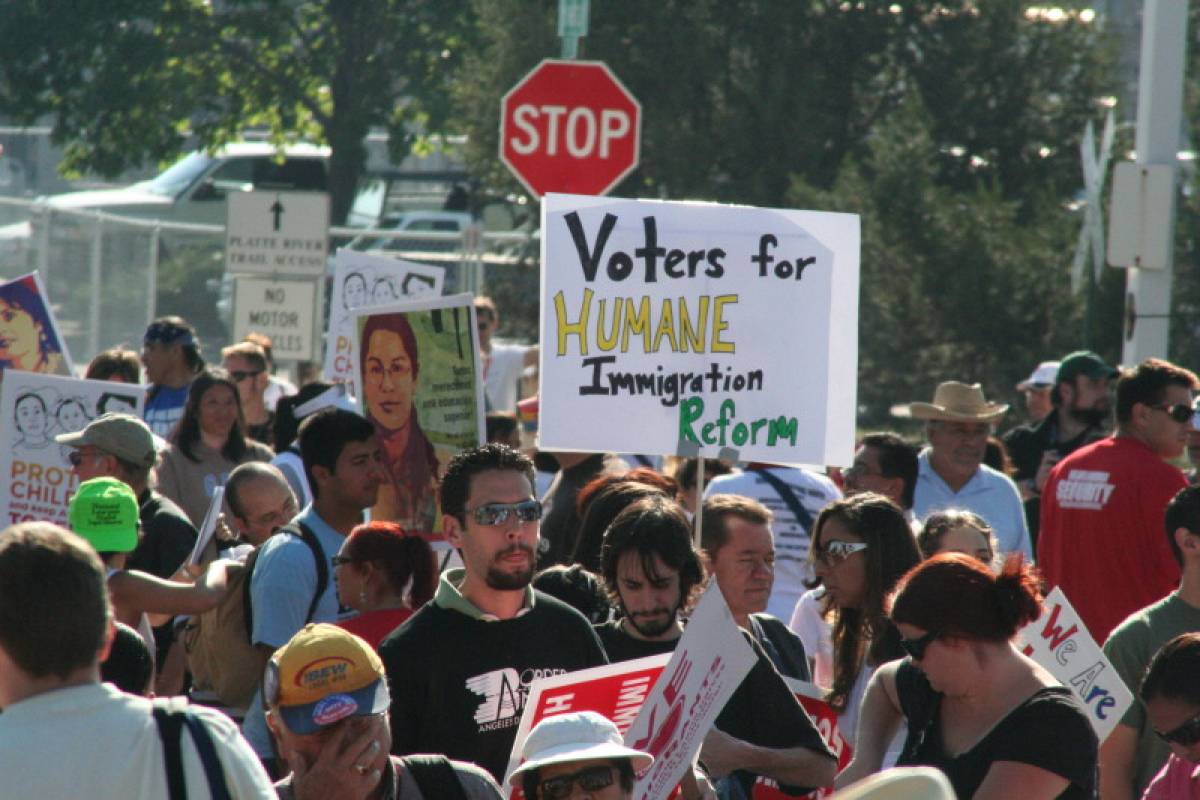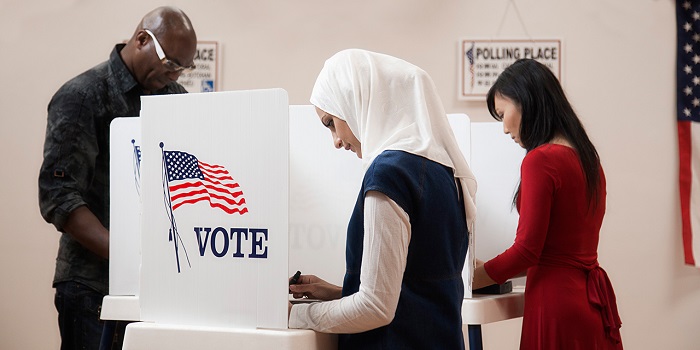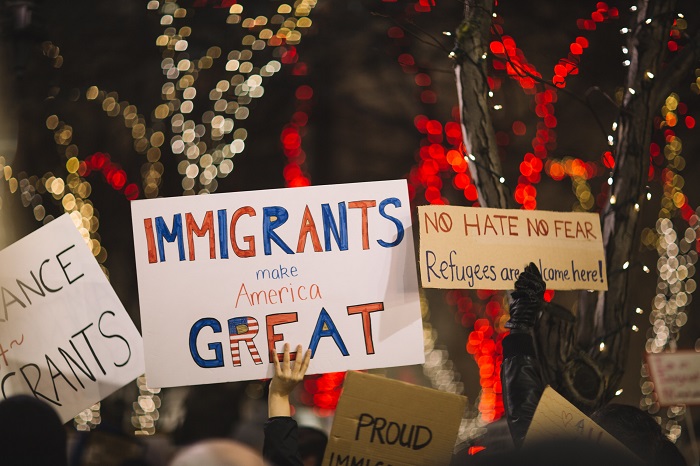The Influence of Immigrant Voters in the US Presidential Election

An Immigrant Rights March. Photo: Trevor Stone/Flickr
The 2020 US presidential election had a record-high number of eligible immigrant voters, and this made a significant impact in the overall voter turnout and final results.
A report by Pew Research shows that foreign-born Americans represented 1 in 10 eligible voters in the election. This shows how they have grown in size over the years.
The last election had more than 23 million immigrant eligible voters, nearly doubled the figure in the 2000 election, which had 12 million immigrant electorates.
93 Percent Growth in Two Decades
By definition, eligible immigrant voters are foreign-born individuals, 18 years and above, who have become US citizen through naturalization. They represent 10% of the country’s 2020 overall electorate, a significant increase from 6.2% in 2000. This means a 93% increase since the last 2 decades, compared to the US-born eligible voter population, which increased less rapidly by only 18% (181 million to 215 million) over the same period.
However, it is worth noting that the immigrant voter population comprises various ethnic backgrounds, including African Americans, Asian Americans, and Latinos. Growth among these ethnic groups also varies widely as some grow more rapidly than others.
For instance, the Latino community (both US-born and foreign-born) had 32 million eligible voter – the highest among ethnic minority communities. This was followed by the Black Americans community with 30 million eligible voters. And the Asian American community had 11 million eligible voters.
Interestingly, out of these three major ethnic groups, the Asian American voter population has the fastest-growing eligible voters. Between 2000 and 2020, it has grown exponentially by 139%, compared to Latino and Black voter population, which grew by 121% and 33%, respectively, over the same period. It is also the only group with more foreign-born eligible voters than the US-born.
As of 2018, foreign-born citizens made up about two-thirds of all American-Asian population. This explains why its eligible voter population doubled from 3.3 million to 6.9 million between 2000 and 2018 – an increase strongly influenced by its naturalized citizens.
Differences in Voting Behaviors

Naturalized US Citizens vote in Presidential election. Photo: Hill Street Studios/Getty Images
Another key point about immigrant voters is that their voting behaviors and political ideologies aren’t monolithic. They usually vote based on different issues affecting their immediate communities. In every election, various communities support any candidate they believe would best represent their interest.
Some pre-election surveys show that nearly all these major immigrant communities identified COVID-19 as one of the issues that would influence their decisions at the 2polls. Other important issues raised include employment, racism and discrimination, and immigration policy.
It is no doubt that immigration policy became one of the most debated issues under the last administration, given that former President Donald Trump made more than 400 immigration policy changes. These include banning people from some predominantly Muslim countries, denying green cards to immigrants who might need public assistance, and extending the US-Mexico border wall. All these generated strong reactions both nationally and internationally.
"These proposals may also affect how immigrants see their place in America and the potential role they could play in the 2020 presidential election," Pew says. And as rightly predicted, it did influence immigrant voters’ reactions at the polls.
Higher Favorability for the Democratic Party
However, despite their seeming common interests, there were still noticeable differences in voting patterns among immigrant voters. This is because even within each immigrant community, there are various minority groups, and this has always represented significant flexibilities in party affiliation and voting pattern. For example, 85% of Asian Americans are made up of 6 origin groups – Chinese, Indian, Filipino, Vietnamese, Korean, and Japanese.
According to a 2018 survey, Vietnamese Americans are more likely to identify as Republicans, while Indian Americans are more likely to identify as Democrats. And in the run-up to the 2020 presidential race, when all other Asian American groups were rooting for President Joe Biden, the Vietnamese American community favored Trump more.
Biden's favorability among Japanese Americans, Korean Americans, and Chinese Americans was 61%, 57%, and 56%, respectively. In contrast, only 28% of Vietnamese favored him. Though these flexibilities were reflective in the general elections as many immigrant neighborhoods shifted red, a greater proportion of immigrant vote still went to Biden.
Right from the campaigns period, there were clear indications that the Biden team enjoyed far greater immigrant support than Trump. Though the communities witnessed a surge of outreach for both political parties, the support titled more towards the left than the right wing. For instance, in a pre-election survey, 81% of Black Americans, 65% of Latinos, and 54% of Asian Americans said they perceived Biden truly cares about their communities. In comparison, only 14% of Blacks, 28% of Latinos, 24% of Asian Americans said the same about Trump.
And expectedly, those pre-election perceptions were strongly conveyed at the polls, as 87% of the Black vote, 66% of the Latino vote, and 63% of the Asian American vote went to Biden.
Future of US Immigrant Voters

Marchers hold up placards, one reading “Immigrants make America Great,” in Seattle, US. Photo: Nitish Meena/Unsplash
Though the election may have come and gone, it remains a reflection of what the future holds in subsequent elections. From all indications, the ethnic-minority population will continue to grow at a rapid rate and will soon overtake the white population.
A survey by the Center for American Progress shows that in 1980, 80% of the US population were white. Fast forward to 2015, the figure had fallen to 63% and expected to drop further to less than 44% by 2060. Contrastingly, while the white population drops, the ethnic-minority population from various backgrounds is expected to keep growing.
This surge is largely influenced by the high rate of naturalization among immigrants in the US. Every year, thousands of immigrants receive US citizenship through naturalization. This factor, coupled with nativity (birthrate among immigrant citizens), is responsible for this exponential increase. And all these will continue to play a role in future elections – an indication that the foreign-born US voter population is a force to reckon with.
In addition, this demographic evolution will not stop at just influencing election results, but also reshape the entire American political terrain. Apart from the increase in participation, higher representations in elected offices should be expected going forward.
Each election year will keep witnessing more immigrant contestants vying for public offices. In addition, the evolution is about to spark the birth of a new, diversified America in which there will be an increase in states with majority-minority populations.


![9 Tips for Managing Your Online Writing Projects Efficiently [node:titile]](/sites/default/files/styles/thumbnail_rectangle/public/open-book-laptop-online-writing-tips.jpeg?itok=iq4PIT7b)


















